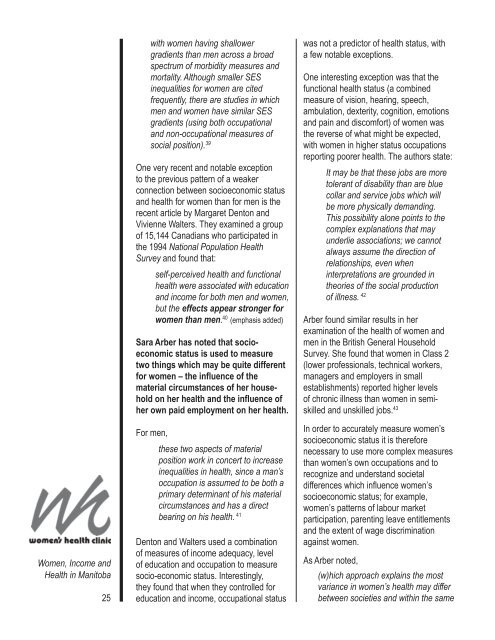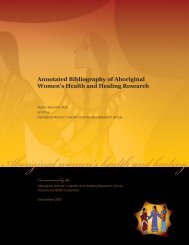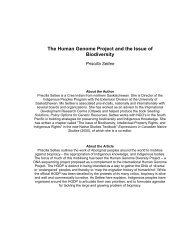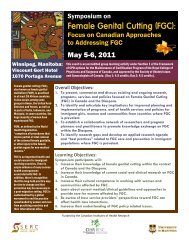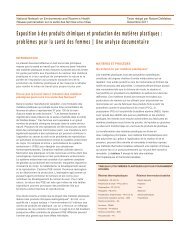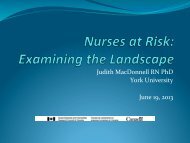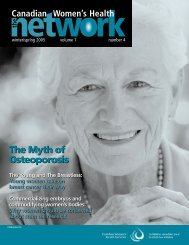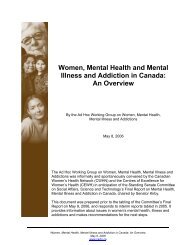here. - Canadian Women's Health Network
here. - Canadian Women's Health Network
here. - Canadian Women's Health Network
- No tags were found...
You also want an ePaper? Increase the reach of your titles
YUMPU automatically turns print PDFs into web optimized ePapers that Google loves.
Women, Income and<strong>Health</strong> in Manitoba25with women having shallowergradients than men across a broadspectrum of morbidity measures andmortality. Although smaller SESinequalities for women are citedfrequently, t<strong>here</strong> are studies in whichmen and women have similar SESgradients (using both occupationaland non-occupational measures ofsocial position). 39One very recent and notable exceptionto the previous pattern of a weakerconnection between socioeconomic statusand health for women than for men is t<strong>here</strong>cent article by Margaret Denton andVivienne Walters. They examined a groupof 15,144 <strong>Canadian</strong>s who participated inthe 1994 National Population <strong>Health</strong>Survey and found that:self-perceived health and functionalhealth were associated with educationand income for both men and women,but the effects appear stronger forwomen than men. 40 (emphasis added)Sara Arber has noted that socioeconomicstatus is used to measuretwo things which may be quite differentfor women – the influence of thematerial circumstances of her householdon her health and the influence ofher own paid employment on her health.For men,these two aspects of materialposition work in concert to increaseinequalities in health, since a man’soccupation is assumed to be both aprimary determinant of his materialcircumstances and has a directbearing on his health. 41Denton and Walters used a combinationof measures of income adequacy, levelof education and occupation to measuresocio-economic status. Interestingly,they found that when they controlled foreducation and income, occupational statuswas not a predictor of health status, witha few notable exceptions.One interesting exception was that thefunctional health status (a combinedmeasure of vision, hearing, speech,ambulation, dexterity, cognition, emotionsand pain and discomfort) of women wasthe reverse of what might be expected,with women in higher status occupationsreporting poorer health. The authors state:It may be that these jobs are moretolerant of disability than are bluecollar and service jobs which willbe more physically demanding.This possibility alone points to thecomplex explanations that mayunderlie associations; we cannotalways assume the direction ofrelationships, even wheninterpretations are grounded intheories of the social productionof illness. 42Arber found similar results in <strong>here</strong>xamination of the health of women andmen in the British General HouseholdSurvey. She found that women in Class 2(lower professionals, technical workers,managers and employers in smallestablishments) reported higher levelsof chronic illness than women in semiskilledand unskilled jobs. 43In order to accurately measure women’ssocioeconomic status it is t<strong>here</strong>forenecessary to use more complex measuresthan women’s own occupations and torecognize and understand societaldifferences which influence women’ssocioeconomic status; for example,women’s patterns of labour marketparticipation, parenting leave entitlementsand the extent of wage discriminationagainst women.As Arber noted,(w)hich approach explains the mostvariance in women’s health may differbetween societies and within the same


